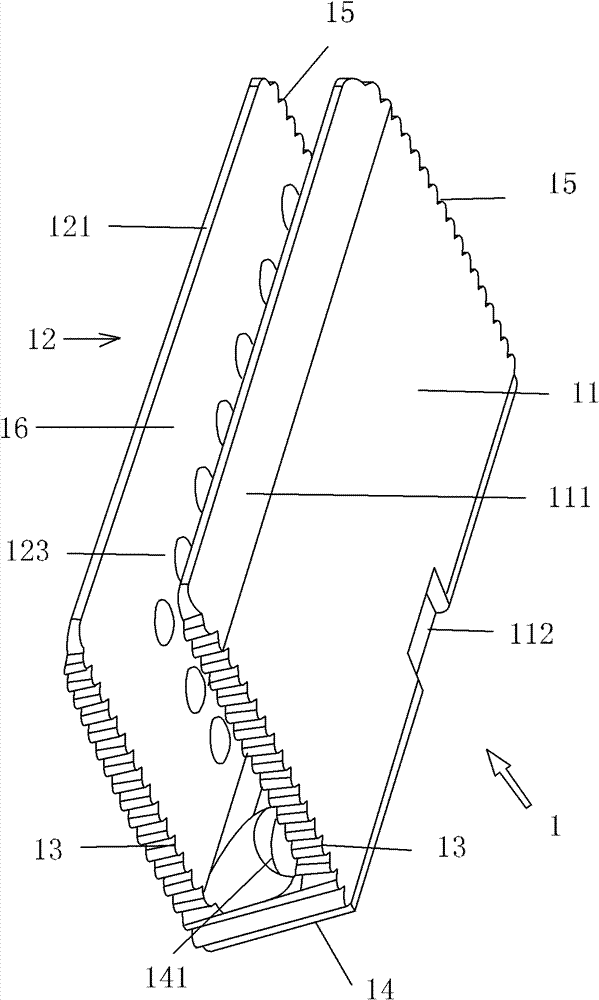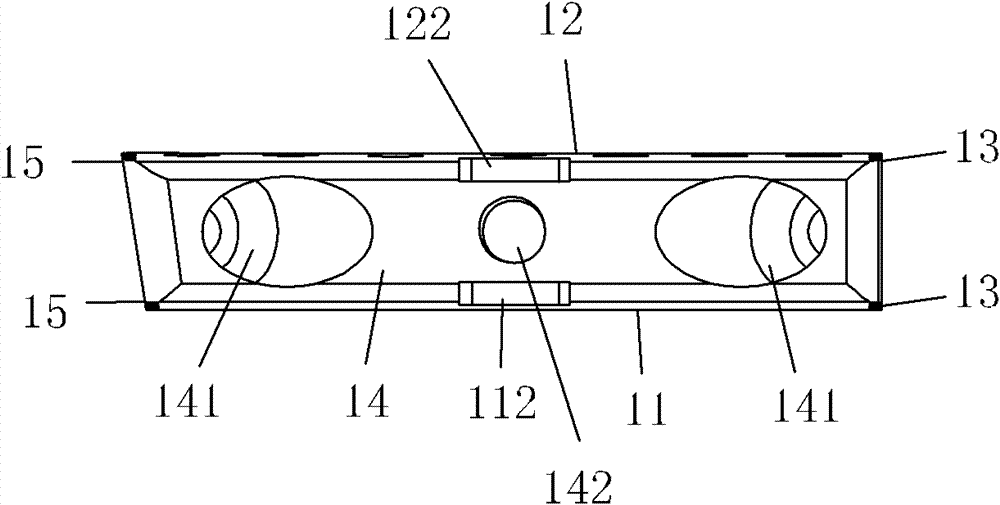Lumbar interbody fusion device
A fusion device and intervertebral technology, which is used in prosthesis, medical science, spinal implants, etc., can solve the problems of difficult to observe the growth of callus, do not have, can not bone graft, etc., achieve easy biological connection, Conducive to bony fusion and reducing the effect of collapse
- Summary
- Abstract
- Description
- Claims
- Application Information
AI Technical Summary
Problems solved by technology
Method used
Image
Examples
Embodiment 1
[0023] An optimized embodiment of the interbody fusion device of the present invention is used for repairing the lumbar spine. The three-dimensional structure of this embodiment, such as figure 1 As shown, it consists of a U-shaped plate 1 and two screws 2.
[0024] U-shaped plate 1 is a hollow skeleton made of titanium alloy with a thickness of 0.6cm. For its structure, please refer to figure 2 . The rear vertical wall 11 and the front vertical wall 12 of the U-shaped plate 1 are integrated by the bottom 14 . The upper and lower two ends of the U-shaped plate 1 are not parallel, and there is an included angle forming a slope. The rear vertical wall 11 of U-shaped plate 1, the upper end of front vertical wall 12 and bottom 14 are opened into tooth bar 13. The rear vertical wall 11 of U-shaped plate 1, the lower end of front vertical wall 12 and bottom 14 are opened into tooth bar 15. The rear vertical wall 11 , the front vertical wall 12 and the bottom 14 of the U-shaped...
Embodiment 2
[0032] The second optimized embodiment of the interbody fusion device of the present invention is used for repairing the thoracic spine. The three-dimensional structure of this embodiment, such as Figure 7 As shown, it consists of a U-shaped plate 6 and two screws 2. The structure of the screw 2 is the same as the screw 2 of the previous embodiment, and will not be repeated here.
[0033] U-shaped plate 6 is a hollow skeleton with a thickness of 0.6cm made of titanium alloy. For its structure, please refer to Figure 8and diagrams. The rear vertical wall 61 and the front vertical wall 62 of the U-shaped plate 6 are connected into one body by the bottom 64 . The upper and lower ends of the U-shaped plate 6 are parallel. The upper and lower ends of the U-shaped plate 6 are not designed with slopes, which can better fit the end plates of the thoracic vertebral body. The upper and lower ends of the rear vertical wall 61 , the front vertical wall 62 and the bottom 64 of the U...
PUM
 Login to View More
Login to View More Abstract
Description
Claims
Application Information
 Login to View More
Login to View More - R&D
- Intellectual Property
- Life Sciences
- Materials
- Tech Scout
- Unparalleled Data Quality
- Higher Quality Content
- 60% Fewer Hallucinations
Browse by: Latest US Patents, China's latest patents, Technical Efficacy Thesaurus, Application Domain, Technology Topic, Popular Technical Reports.
© 2025 PatSnap. All rights reserved.Legal|Privacy policy|Modern Slavery Act Transparency Statement|Sitemap|About US| Contact US: help@patsnap.com



